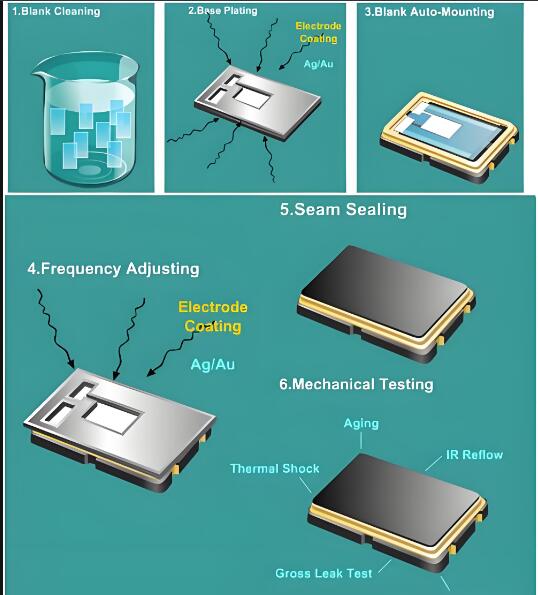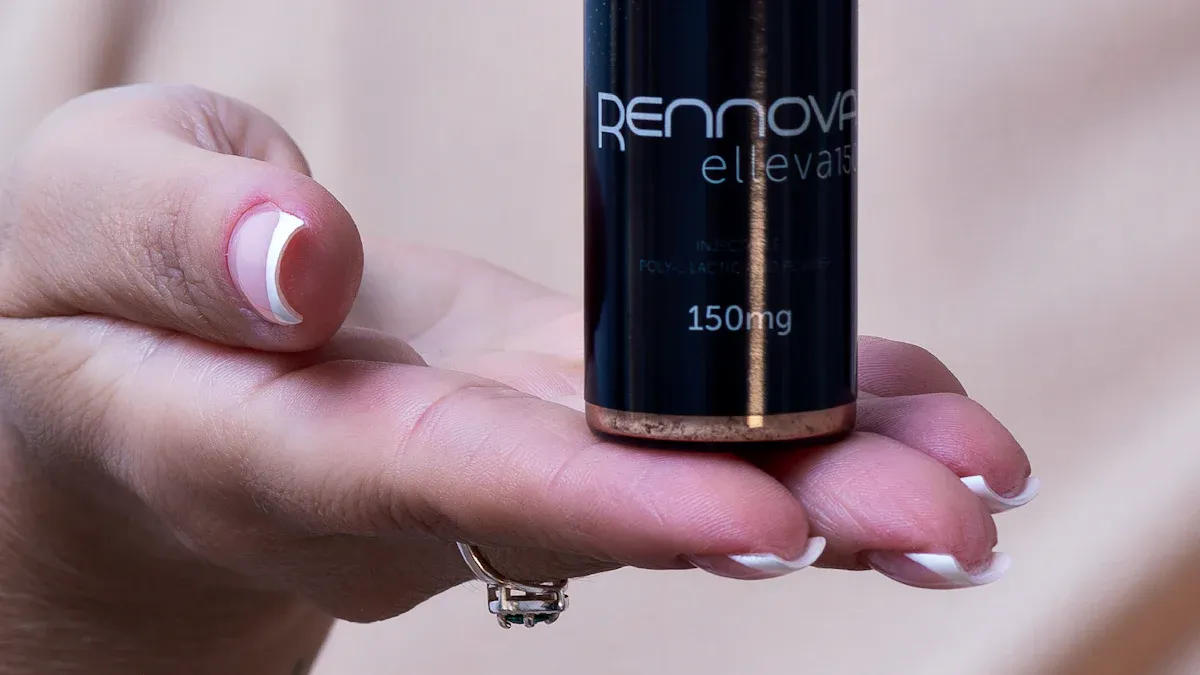Elektronika kristal osilator Bakı – seçim, tədarük, logistika və tətbiqlər

Crystal oscillators play a crucial role in modern electronics, providing stable clock signals essential for various applications. In Baku, the demand for elektronika kristal osilator Bakı spans multiple sectors, including telecommunications, automotive systems, and medical devices. Companies like Harmony Electronics manufacture 32.768 kHz kristal osilator Azərbaycanda, supporting high-precision timing needs across industries. Their products find use in everything from automotive audio to industrial automation, showcasing the versatility and importance of crystal oscillators in today's technology landscape.
Key Takeaways
Choose crystal oscillators based on frequency stability, temperature coefficient, and load capacitance to ensure reliable device performance.
Use temperature compensated (TCXO) or oven controlled (OCXO) oscillators for high precision and stability in harsh environments.
Baku relies mainly on importing crystal oscillators from international suppliers due to the lack of local manufacturers.
Plan logistics carefully by selecting suitable transport methods and complying with customs rules to avoid delays in delivery.
Crystal oscillators are essential in IoT, telecommunications, and industrial systems for accurate timing and improved device reliability.
Selection Criteria
When selecting crystal oscillators, several critical factors come into play. These factors significantly influence the performance and reliability of electronic devices. The primary selection criteria include frequency stability, temperature coefficient, and load capacitance.
Frequency Stability
Frequency stability is paramount for the effective operation of electronic devices. It refers to the ability of a crystal oscillator to maintain a consistent frequency over time and under varying conditions. Several factors affect frequency stability:
Factor | Description and Impact | Mitigation Techniques |
|---|---|---|
Temperature | Most significant cause of frequency drift; causes shifts in tens of ppm, worsening at extremes. | Use TCXO, VCXO, or OCXO for temperature compensation. |
Load Capacitance | Changes in capacitive load affect frequency; improper matching causes drift. | Careful circuit design and component placement. |
Drive Level | Over-driving heats the crystal causing frequency changes; under-driving causes instability. | Maintain proper drive power within specifications. |
Power Supply | Variations alter oscillator circuit resistance, causing frequency drift. | Use regulated power supplies to stabilize voltage. |
Frequency drift can lead to timing errors, reduced system reliability, and degraded performance. Therefore, maintaining frequency stability through quality crystal selection and environmental control is critical for optimal device operation. For instance, temperature compensated crystal oscillators (TCXO) and oven controlled crystal oscillators (OCXO) are often employed in telecommunications and IoT applications to ensure high precision and reliability.
Temperature Coefficient
The temperature coefficient (TC) of a crystal oscillator indicates how much the frequency changes with temperature variations. A lower TC value signifies better temperature stability. In harsh environments, such as aerospace or military applications, maintaining frequency accuracy is crucial.
Quartz crystals naturally exhibit good temperature stability, but significant temperature changes can still cause frequency shifts.
TCXO designs utilize external compensation systems to minimize frequency changes caused by temperature fluctuations, enhancing stability.
For industrial applications, standard AT-Cut crystals typically have frequency stability ranging from ±10 ppm to ±50 ppm over -20°C to +70°C. In contrast, TCXO and OCXO can maintain stability within ±0.5 ppm over a wider temperature range, typically -40°C to +85°C.
Crystal Oscillator Type | Temperature Coefficient Range (ppm) | Operating Temperature Range (°C) | Notes |
|---|---|---|---|
SC-Cut Crystals | Near zero at +90°C (very low TC) | N/A | Superior temperature stability due to zero TC point near +90°C |
AT-Cut Crystals | ±10 to ±50 ppm | -20 to +70 | Common in industrial use with moderate stability |
TCXO (Temperature Compensated) | ±0.5 ppm or better | -40 to +85 | Uses compensation to achieve ultra-high precision |
OCXO (Temperature Controlled) | ±0.5 ppm or better | -40 to +85 | Uses temperature control for highest stability |
MEMS Oscillators | ±50 ppm (up to ±0.1 ppm with compensation) | -40 to +125 | Alternative technology with compensation options |
Load Capacitance
Load capacitance plays a vital role in the performance of crystal oscillators. It refers to the total capacitance that the oscillator sees during operation. Proper matching of load capacitance is essential for frequency accuracy and reliable startup.
Parameter | Crystal with 20pF Load Capacitance (CL) | Crystal with 8pF Load Capacitance (CL) |
|---|---|---|
Frequency | 12 MHz | 12 MHz |
Equivalent Series Resistance (ESR) | 100 Ω | 100 Ω |
Drive Level Requirement | Higher drive level needed, approx. 168 µW power | Lower drive level needed, approx. 9.23 µW power |
Oscillator Margin (gm/gm_crit) | Requires minimum gm of 7.105 mA/V; margin example 5.28 with STM32H5 MCU | Requires minimum gm of 1.375 mA/V; margin example 12.72 with STM32L1 MCU |
Startup Time | Slower startup due to higher load capacitance | Faster startup due to lower load capacitance |
Frequency Pulling Sensitivity | Lower frequency pulling, more stable frequency | Higher frequency pulling, more sensitive to capacitance changes |
Supply Sources in Baku

Baku offers various options for sourcing elektronika kristal osilator Bakı, although local manufacturing appears limited. Currently, no local manufacturers produce crystal oscillators within Baku. However, international suppliers like JAPSON provide access to these components. JAPSON lists Azerbaijan among its service locations, making it a viable option for customers in Baku seeking crystal oscillators.
Local Manufacturers
As of now, Baku lacks local manufacturers that produce crystal oscillators. This absence means that businesses and individuals must rely on international suppliers to meet their needs. While this may pose challenges, it also opens opportunities for sourcing high-quality components from established manufacturers worldwide.
Import Options
Importing crystal oscillators from international suppliers remains the primary option for Baku's market. Companies can explore various online platforms to find reliable suppliers. Some popular part numbers and SMD sizes include:
32.768 kHz: Commonly used in real-time clock applications.
10-52 MHz: Suitable for telecommunications and networking equipment.
38.4 MHz: Often utilized in GNSS modules for precise timing.
When selecting suppliers, consider the following factors:
Reputation: Research the supplier's history and customer reviews.
Delivery Times: Ensure that the supplier can meet your project timelines.
Quality Assurance: Verify that the components meet industry standards.
By focusing on these aspects, businesses can successfully navigate the import process and secure the necessary elektronika kristal osilator Bakı for their projects.
Logistics Considerations
Logistics plays a vital role in the supply chain for elektronika kristal osilator Bakı. Understanding transportation channels and customs regulations helps businesses streamline their operations and ensure timely delivery of components.
Transportation Channels
Baku benefits from several transportation channels that facilitate the import of crystal oscillators. These channels include:
Air Freight: This method offers the fastest delivery times. It is ideal for urgent shipments of elektronika kristal osilator Bakı. Air freight ensures that components arrive quickly, minimizing downtime for manufacturers.
Sea Freight: While slower than air freight, sea freight is often more cost-effective for larger shipments. Businesses can use this method for bulk orders of crystal oscillators, balancing cost and delivery time.
Road Transport: Local distribution within Baku relies on road transport. This method allows for flexible delivery options and can accommodate smaller orders efficiently.
Customs Regulations
Navigating customs regulations is crucial for importing crystal oscillators into Baku. Importers must comply with specific requirements to avoid delays. Key considerations include:
Documentation: Importers must prepare accurate documentation, including invoices, packing lists, and certificates of origin. Proper paperwork helps expedite customs clearance.
Duties and Taxes: Import duties and taxes may apply to imported electronic components. Understanding these costs is essential for budgeting and pricing strategies.
Compliance with Standards: Crystal oscillators must meet local and international standards. Ensuring compliance can prevent issues during customs inspections.
Delivery timelines are critical in the electronics industry. Delays can disrupt production schedules and impact project deadlines. By understanding transportation options and customs regulations, businesses can better manage their supply chains and ensure timely access to elektronika kristal osilator Bakı.
Applications of Elektronika Kristal Osilator Bakı

Crystal oscillators play a vital role in various applications, particularly in the fields of IoT (Internet of Things) and telecommunications. Their ability to provide stable and precise timing signals makes them essential components in modern electronic systems.
IoT and SCADA
In the realm of IoT and SCADA (Supervisory Control and Data Acquisition), crystal oscillators ensure reliable communication and data processing. These systems often require precise timing to synchronize data collection and transmission. For instance, many IoT devices utilize 32.768 kHz crystal oscillators for real-time clock functions. This frequency is crucial for maintaining accurate timekeeping in devices such as sensors and smart meters.
Key Benefits of Crystal Oscillators in IoT:
They provide stable clock signals, which are essential for data integrity.
Their compact size allows for integration into small devices, making them ideal for IoT applications.
They enhance energy efficiency, which is critical for battery-powered devices.
The use of crystal oscillators in SCADA systems also supports the monitoring and control of industrial processes. These oscillators help maintain synchronization across various components, ensuring that data is collected and processed accurately.
Telecommunications
In telecommunications, crystal oscillators serve as the backbone of frequency control. They generate stable oscillations that act as the timing heartbeat for digital devices. This stability is crucial for the operation of communication systems, including those in Azerbaijan's telecommunications infrastructure.
Quartz crystal oscillators provide precise and stable frequency control, which is essential for timing and synchronization in telecommunications equipment. Their role includes:
Timing and Synchronization: They ensure that signals remain in sync, preventing data loss and improving communication quality.
Plug-and-Play Solutions: Many oscillators simplify system design, allowing for easy integration into existing systems.
MEMS Oscillators: These offer about 30 times better reliability than traditional quartz crystals. They also have a smaller package size, which reduces PCB area and costs. Additionally, MEMS oscillators are less sensitive to electromagnetic interference and vibration, making them suitable for harsh environments.
The improvements provided by crystal oscillators contribute to a more reliable and efficient telecommunications infrastructure. As the demand for high-speed communication continues to grow, the importance of these components in maintaining system performance cannot be overstated.
In summary, the demand for elektronika kristal osilator Bakı continues to grow, driven by advancements in technology and the increasing need for precision in various applications. As the market evolves, trends indicate a shift from traditional quartz oscillators to MEMS technology. This transition offers several advantages, including improved reliability and lower lifecycle costs.
Trend / Aspect | Description |
|---|---|
Shift from Quartz to MEMS | Increasing adoption of MEMS oscillators due to better reliability, scalability, programmability, and resilience |
Manufacturing Efficiency | MEMS use silicon fabrication enabling scalable, high-volume production; quartz requires specific crystal cuts |
Cost and Lifecycle Benefits | MEMS have higher upfront cost but lower lifecycle costs due to lower failure rates and maintenance needs |
Key Application Areas | AI data centers, aerospace & defense, 5G communications, automotive (EVs, ADAS), IoT devices |
Performance Advantages | MEMS offer lower jitter, better environmental tolerance, programmability, and integration with semiconductor tech |
These trends highlight the importance of staying informed about technological advancements in the crystal oscillator market.
What is a crystal oscillator?
A crystal oscillator generates stable clock signals using the resonance of quartz crystals. It provides precise timing for various electronic applications, ensuring reliable performance in devices.
Why is frequency stability important?
Frequency stability ensures that a crystal oscillator maintains a consistent frequency over time and varying conditions. This stability is crucial for accurate timing in electronic systems.
How do temperature changes affect crystal oscillators?
Temperature changes can cause frequency drift in crystal oscillators. A lower temperature coefficient indicates better stability, minimizing frequency shifts in harsh environments.
What are the common applications of crystal oscillators?
Crystal oscillators find applications in telecommunications, IoT devices, industrial automation, and consumer electronics. They provide essential timing signals for these technologies.
How can I source crystal oscillators in Baku?
Sourcing crystal oscillators in Baku typically involves importing from international suppliers. Online platforms and established manufacturers offer reliable options for obtaining these components.
See Also
Ways Booming Technology Continues To Excel In Electronics
Unlocking Project Potential With EP2C50F484I8N FPGA
CALL US DIRECTLY
(+86)755-82724686
RM2508,BlockA,JiaheHuaqiangBuilding,ShenNanMiddleRd,Futian District,Shenzhen,518031,CN
www.keepboomingtech.com sales@keepboomingtech.com
